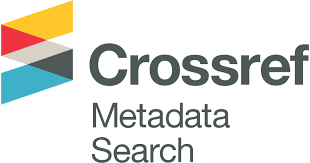Risk factors of coronary heart disease patients at Misrata: Awareness and orientation
DOI:
https://doi.org/10.58916/jhas.v8i3.112الكلمات المفتاحية:
: Awareness, Coronary Heart Disease, Lifestyle, Misrata, Risk factor.الملخص
Many prospective studies have examined the associations between intakes of individual foods and the risk of coronary heart disease (CHD), but few have evaluated the relation of overall dietary patterns to the risk. A descriptive hospital-based study was conducted to assess knowledge of CHD patients about risk factors in Misrata hospitals. The study has consisted of 100 patients with CHD, at different ages, who were selected randomly during 2019. The study data were collected using well-structured questionnaire, patient record, and anthropometric measurements. Pearson correlation was used to examine correlation between risk factors, blood fat profiles, and lifestyle. The results revealed that (52%) of patients fall within the age group 51-70 years, the CHD was widely prevalent among males (55%), most of the patients (41%) were illiterate, majority of patients (92%) were suffering from other chronic diseases such as diabetes, hypertension, and obesity. The majority of patients (63%) were considerably ignorant of the causes and risk factors for CHD (P≤0.05). The majority of patients (54%) have excess weight and engage in sporadic physical activity. When compared to fewer patients (8%) who follow up with a dietician, there is a significant difference (P≤0.05) between patients who have no knowledge of the CHD diet regimen and those who have not received any counseling themselves. The correlation between age groups, chronic illnesses, and blood fat profiles was significant (P≤0.05), according to the results. The majority of patients had no practiced therapeutic lifestyle and little physical activity towards control of CHD. The appropriate nutrition education and patients counseling should be recommended among outpatients of CHD.
التنزيلات
المراجع
M. Dariush, Fish consumption and stroke risk in elderly individuals: the cardiovascular health study. Archives of Internal Medicine, 2005, 165.2: 200-206.
A. H. A. American Heart Association, Re: Heart disease and Stroke Statistics-2010 Update. 2010, Retrieved from http://circ.ahajournals.org/cgi/reprint/121/7/e46
C. D. C. Centers for Disease Control and Prevention. Re: Heart Disease and Stroke Prevention (2007).
N. C. Agrinier, M. Cournot, J. Dallongeville, D. Arveiler, D. Ducimetiere, J. Ferrieres, Menopause, and modifiable coronary heart disease risk factors: A population-based study. Maturitas Journal, 2010, 65, 237-243.
M. Hussain M, N. Khan, M. Uddin, M. M. Nozha. Chest pain, coronary artery disease and risk factors: A global snapshot. J Dow Univ Heal Sci Karachi 2014;8:74–80.
P. Goyal, S. C. Kale, R. Chaudhry, S. Chauhan, N. Shah, Association of common chronic infections with coronary artery disease in patients without any conventional risk factors, Indian Journal of Medical Research, 2007, 125(2), 7872-7876.
Y. Cavusoglu, B. Timuralp, T. Us, Y. Akgun, G. Kudaiberdieva, B. Gorenek, N. Ata, Cigarette smoking increases plasma concentrations of vascular cell adhesion molecule-1 in patients with coronary artery disease. Angiology, 2004, 55, 397-402.
Z. Mei, L. M. Strawn, A. Pietrobelli, Validity of body mass index compared with other body-composition screening indexes for the assessment of body fatness in children and adolescents. Am J Clin. Nutr. 2002; 75:978.
C. K. Chow, A. C. Pell, "Walker, Families of patients with premature coronary heart disease: an obvious but neglected target for primary prevention BMJ, 2007, 8335 (7618):481-500.
G. W. Mikhail, "Coronary heart disease in women, BMJ, 2005, 3331(7515):467-8.
E. T. Jimenez, Prevalence risk assessment for Cardiovascular Diseases among Young Women and the impact of therapeutic lifestyle Modification", Journal of the American Dietetic Association, 2008, 108 (2): 347-356.
J. J. Carrero, "Intake of fish oil, oleic acid, folic acid, and vitamins B-6 and E for 1 year decreases plasma C-reactive protein and reduces coronary heart disease risk factors in male patients in a cardiac rehabilitation program, The Journal of nutrition, 2007, 137.2: 384-390.
F. W. Booth, M. V. Chakravarthy, E. E. Spangenburg, "Exercise and gene expression: physiological regulation of the human genome through physical activity, The Journal of physiology, 2002, 543(2), 399-411.
N. M. Hawkins, S. Scholes, M. Bajekal, "The UK National Health Service: delivering equitable treatment across the spectrum of coronary disease. Cardiovascular Qual Outcomes, 2013, 16(2):208-16. Doi: 10.1161/CIRCOUTCOMES.111.000058. Epub .12.
V. C. Kuppuswamy, S. Gupta, "Excess coronary heart disease in South Asians in the United Kingdom, BMJ, 2005, 28330 (7502):1223-4.
N. Umesh, P. Monika, T. Christopher, Prevalence of conventional risk factors of CHD, JAMA, 2003, 290: 898-904.
R. Gupta, P. Joshi, V. Mohan, K. S. Reddy & S. Yusuf, Epidemiology and causation of coronary heart disease and stroke in India. Heart, 2008, 94 (1): 16-26.
A. J. Arti-Carvajal, I. Sola, D.Lathyris, Homocysteine-lowering interventions for preventing cardiovascular.














